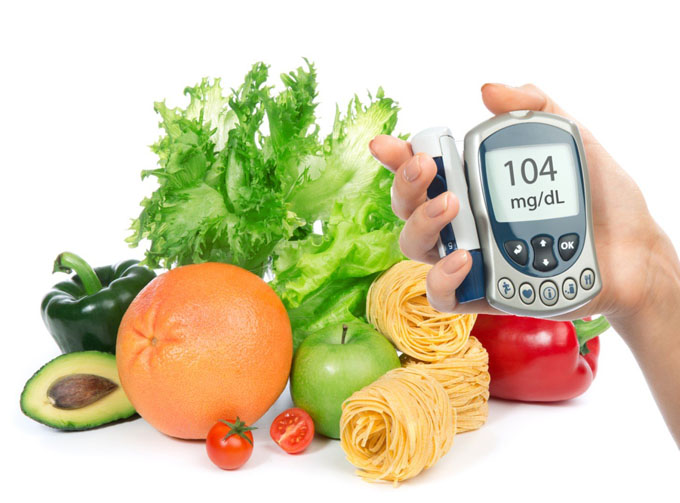We can understand your woes if you are facing a disease like diabetes. If you have tried everything mentioned by your doctor, but you are unable to manage the sugar level in your body, you are in need of an exchange method for managing diabetes.
Even if you are new to diabetes or you are struggling to manage your blood sugar levels for a long time, the exchange method can help you in staying on track. In this article, we will help you know every little detail about the exchange method for managing diabetes.
In simple terms, an exchange method is a food swap system that will help you stay on track.

What is an exchange method for managing diabetes?
The exchange method can help you see how a particular type of food can fit into your everyday food plan. The use of an exchange method will enable you to add variety to your diet. In addition to this, you will also have your blood sugar level under control.
The exchange food list given below is comparable in terms of nutrition. Each food mentioned on the list has the same amount of carbohydrates, protein, fat, and calories as other food on the list.
Thus, you can easily trade it for another food item given on the list. For example, you can exchange a slice of bread for breakfast with ½ cup cooked cereal of your choice. In both cases, you will have an equal amount of starch.
But, some food items may not seem to belong to the exchange group to which they have been assigned. These food items include:
- Different types of non-meat products can be used as meat exchanges because of the protein and fat content inside them. For example, cheese and peanut butter can be exchanged for meat products.
- The term vegetable exchange will include all types of vegetables. For example, vegetables like lima beans, peas, and corn are listed as a starch exchange because of their carbohydrate and protein content.
- You also need to know that not all starch exchanges are bread. This can also include starchy veggies, cereals, pasta, or other types of grain products.
How can you use the diabetic exchange list?
If you are a beginner, you may get confused about how to use the diabetic exchange list. But, don’t worry, after starting this program, you will get multiple health benefits, especially for your diabetes issue.
Before you start planning your diet as per the diabetic exchange list, you should try to contact a registered nutritionist or dietician. This way, you will be able to get an appropriate meal plan. After that, you can pick any food item from the exchange list. But, keep in mind the serving size, or else the sugar level in your body will fluctuate.
The best part about an exchange method for managing diabetes is that you can try these foods every day. The list is divided into six groups. You need to eat the right number of servings from each food group to control diabetes.
The inclusion of an exchange method for managing diabetes will not only help you in controlling the level of blood sugar and total calories, but it will also prevent different types of diseases. For example, you won’t have to worry about eye, nerve, or heart problems if the blood sugar is within a normal range.
Exchange method for bread/starch
- ½ cup cooked cereal of any kind
- ½ cup cooked pasta
- ⅓ cup cooked rice
- ⅓ cup cooked beans
- ½ cup corn
- ½ cup mashed potato
- 1 bread slice
- 3 cups plain popcorn
- 6 saltine cracker
Exchange for meat/protein
- 1 ounce of lean beef
- 1 ounce of lean pork
- 1 ounce of chicken with no skin
- 1 ounce of fish
- 1 ounce of cottage cheese
- 1 ounce of 3 egg white
In need for medium fat
- 1 ounce ground beef
- 1 ounce chicken with skin
- 1 ounce of mozzarella cheese
- 1 egg
- 4 ounces of tofu
In need for high fat
- 1 ounce of beef ribs
- 1 ounce of fried fish
- 1 ounce of cheddar cheese
- 1 ounce of sausage
Diabetic exchange for veggies
- ½ cup cooked veggies
- 1 cup raw veggies
Diabetic exchange for fruits
- 1 apple
- ½ banana
- ¾ cup blueberries
- 12 cherries
- 1 kiwi
- 15 grapes
- 1 orange
- 3 prunes
Diabetic exchange for milk
In need for skimmed milk
- 1 cup skim milk
- 1 cup 1% milk
- 8 ounce of plain, non-fat yogurt
In need for low fat milk
- 1 cup 2% milk
- 8 ounces of low-fat yogurt
In need for whole milk
- 1 cup whole milk
- 8 ounce of whole milk yogurt
Diabetic exchange for fats
- ⅛ avocado
- 1 tbsp mayonnaise
- 6 almonds
- 1 tsp butter
- 1 slice bacon
Before you begin using this exchange method for managing diabetes, make sure to talk to your caregiver if you feel that your blood sugar levels are too high or too low. Also make sure to check your cholesterol and blood lipid levels once every year. A balanced diet will help you stay healthy and you will be able to enjoy delicious food items even if you have diabetes.